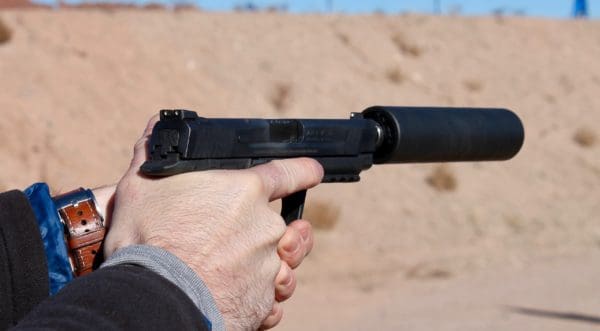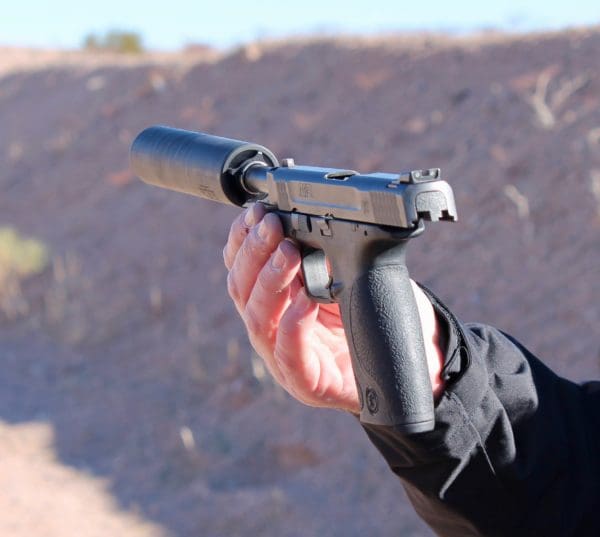 SilencerCo has always been the 800 pound gorilla in the room when it comes to silencer innovation, production, and marketing. They make a lot of silencers, and it can start to get confusing fast. On the pistol side alone, SilencerCo makes eight different models within three subgroups – Osprey, Octane, and Omega K.
SilencerCo has always been the 800 pound gorilla in the room when it comes to silencer innovation, production, and marketing. They make a lot of silencers, and it can start to get confusing fast. On the pistol side alone, SilencerCo makes eight different models within three subgroups – Osprey, Octane, and Omega K.
The Omega 45K is a new for 2017 model that picks up where the Omega 9K, introduced this time last year, left off. Given that the Omega series of pistol suppressors is designed to do multiple duties across various guns, it should come as no surprise that SilencerCo elected to go with a larger bore diameter to allow for pistols and pistol caliber carbines in .40 S&W, 10 mm, and .45 ACP. In addition, lever action rifles with threaded muzzles seem to be a hot new thing, and .45 Long Colt begs to be suppressed.
On the M&P 45 pictured, the Omega 45K did a great job of bringing the noise down to hearing safe levels – right at 135 dB if their website is to be believed. 9 mm should meter in the 138 dB range with .40 S&W in roughly the same ballpark.

Where most of the pistol cans I’ve seen on the market are also marketed to work with 300 BLK, they usually include the disclaimer that ammunition should be kept to subsonic only. Not so with the Omega 45K (or the 9K), as you’re cleared to go hot, full auto, with supers or subs.
Included in the MSRP of $865 is a 5/8″-24 thread mount, and a piston housing for usage with pistols. Pistons are sold separately, but can usually be found for ~$70. I’m looking forward to getting one of these in my hands for some durability and sound testing in the not too distant future.




Comparison test with the Ospreys please!
Like most of us, I am waiting for the HPA to pass…AND I’m hoping that President-elect Trump removes silencers from the NFA. However, I don’t want to spend that much $$ for a device that renders my factory sights useless. Come on engineers, get out your slide rules and design flat top silencers that we can use with our existing iron sights. How can you speak of innovation when the cans of today resemble, almost exactly, the cans of the 1930’s.
https://silencerco.com/silencers/osprey/
They have the medicine you need.
Comments are closed.